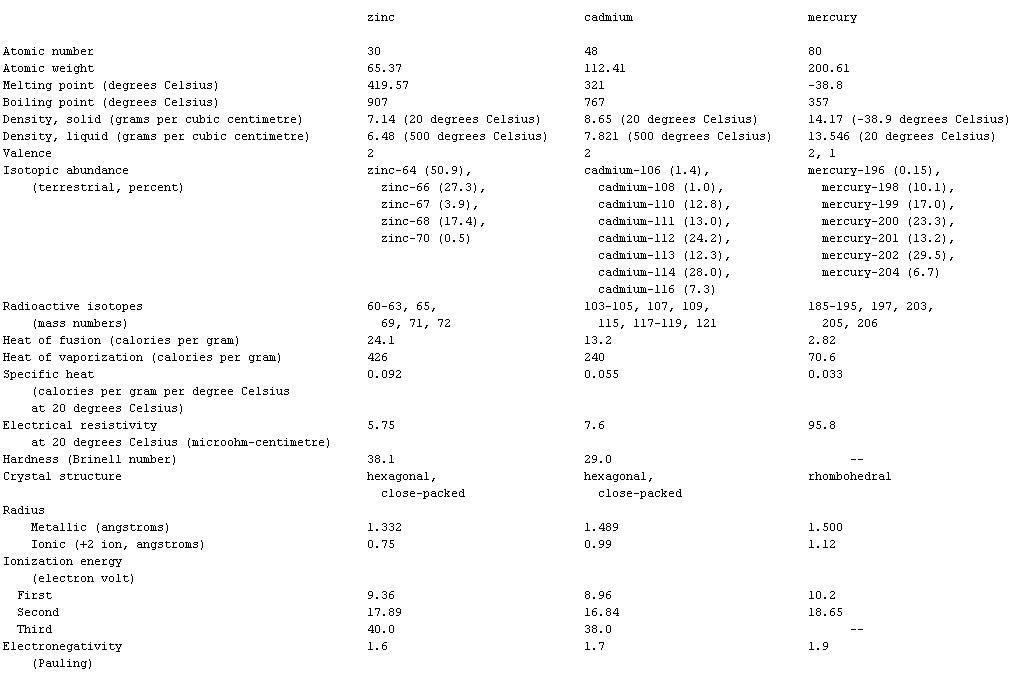- Some Properties of the Zinc Group Elements, Table
-
▪ Tablezinc cadmium mercuryAtomic number 30 48 80Atomic weight 65.37 112.41 200.61Melting point (degrees Celsius) 419.57 321 -38.8Boiling point (degrees Celsius) 907 767 357Density, solid (grams per cubic centimetre) 7.14 (20 degrees Celsius) 8.65 (20 degrees Celsius) 14.17 (-38.9 degrees Celsius)Density, liquid (grams per cubic centimetre) 6.48 (500 degrees Celsius) 7.821 (500 degrees Celsius) 13.546 (20 degrees Celsius)Valence 2 2 2, 1Isotopic abundance zinc-64 (50.9), cadmium-106 (1.4), mercury-196 (0.15),zinc-67 (3.9), cadmium-110 (12.8), mercury-199 (17.0),zinc-68 (17.4), cadmium-111 (13.0), mercury-200 (23.3),zinc-70 (0.5) cadmium-112 (24.2), mercury-201 (13.2),cadmium-113 (12.3), mercury-202 (29.5),cadmium-114 (28.0), mercury-204 (6.7)cadmium-116 (7.3)Radioactive isotopes 60-63, 65, 103-105, 107, 109, 185-195, 197, 203,(mass numbers) 69, 71, 72 115, 117-119, 121 205, 206Heat of fusion (calories per gram) 24.1 13.2 2.82Heat of vaporization (calories per gram) 426 240 70.6Specific heat 0.092 0.055 0.033(calories per gram per degree Celsiusat 20 degrees Celsius)Electrical resistivity 5.75 7.6 95.8at 20 degrees Celsius (microohm-centimetre)Hardness (Brinell number) 38.1 29.0 —Crystal structure hexagonal, hexagonal, rhombohedralclose-packed close-packedRadiusMetallic (angstroms) 1.332 1.489 1.500Ionic (+2 ion, angstroms) 0.75 0.99 1.12Ionization energyFirst 9.36 8.96 10.2Second 17.89 16.84 18.65Third 40.0 38.0 —Electronegativity 1.6 1.7 1.9(Pauling)

* * *
Universalium. 2010.
